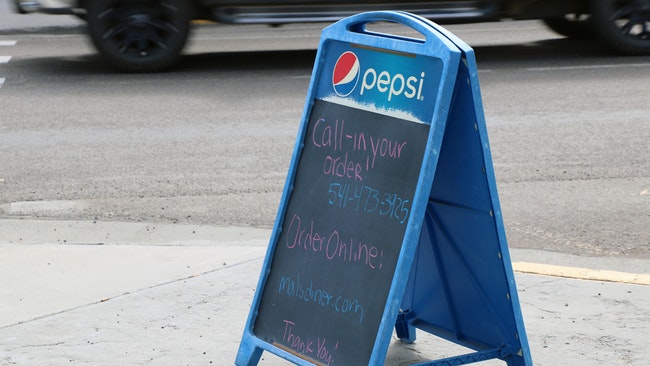
Restaurants were especially hard hit during the pandemic. (The Enterprise/Yadira Lopez)
VALE – Malheur County has a lower unemployment rate than the state, but according to the Oregon Employment Department, that strong number likely doesn’t represent all groups equally.
A new report, “Disparate Impacts of the Pandemic Recession in Oregon,” details how women, young people, low-wage earners and people of color across Oregon felt a heavier impact of the pandemic recession.
“Leisure and hospitality, other services – including hair salons, repair shops, and other personal services – and private education accounted for nearly half (48%) of all jobs lost in the initial economic shock,” the report said.
Latinos of any race, women and low-wage earners were disproportionately employed in leisure and hospitality jobs statewide, the report said.
Unemployment claims from Latinos didn’t increase in a way that reflected their share of the leisure and hospitality workforce, likely indicating some workers didn’t pursue unemployment relief even if they lost their jobs.
This “may reflect barriers to accessing benefits,” according to the report. Those barriers might include difficulties with language and communication, the closure of public places where free internet was available, and a lack of familiarity with government systems, the report suggested.
In Malheur County, about half of unemployment insurance claims were filed by Latinos before the pandemic, said Chris Rich, state regional economist. During the pandemic, that number dropped to around 45%. Rich said that was because while unemployment applications rose among Latinos and non-Latinos during the pandemic, the increase in claims from non-Latinos was greater, and led to them having a higher share of all claims.
Rich said data on race and gender in unemployment claims was often lacking, complicating analysis.
“It’s difficult to tell the true extent to which job loss occurred in certain populations,” Rich cautioned. “Information comes directly from unemployment insurance claims, but there’s often information missing.”
“Two-thirds (68%) of Oregon’s pre-pandemic claims have no race information attached,” according to the report. “While greatly improved, more than one-third (36%) of pandemic claims information includes no race indicator.”
May data from the state Employment Department showed that Malheur County’s unemployment rate was 4.6%, down from an April 2020 peak of 7.7%. The rate before the pandemic spike was 3.5%. Malheur County’s current rate is one point below the 5.6% Oregon average.
Rich said that as compared to cities, rural counties had been comparatively insulated from the economic effects of the pandemic. He identified Malheur County’s proximity to Idaho, whose economy actually added jobs during the pandemic, as an advantage.
“A lot of the rural counties were able to bounce back a little quicker,” he said. “Decisions are made at the corporate level for city businesses, whereas you’ve got a lot more localized decisions in the rural areas. As a business owner, you might be able to shift on the fly a little more.”
News tip? Contact reporter Liliana Frankel at [email protected] or 267-981-5577.
SAFEGUARD YOUR LOCAL NEWS
Take one action today to help the Enterprise grow and do more for the community through accurate, fair reporting.
SUBSCRIBE: A monthly digital subscription is $5 a month.
GIFT: Give someone you know a subscription.
ONE-TIME PAYMENT: Contribute, knowing your support goes towards more local journalism you can trust.




